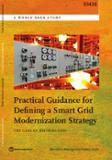Practical guidance for defining a smart grid modernization strategy: the case of distribution
Practical guidance for defining a smart grid modernization strategy: the case of distribution

This report provides some practical guidance on how utilities can define their own smart grid vision, identify priorities, and structure investment plans. While most of these strategic aspects apply to any area of the electricity grid, the document focuses on the segment of distribution. The guidance includes key building blocks that are needed to modernize the distribution grid and provides examples of grid modernization projects. Potential benefits that can be achieved (in monetary terms) for a given investment range are also discussed. The concept of the smart grid is relevant to any grid regardless of its stage of development. What varies are the magnitude and type of the incremental steps toward modernization that will be required to achieve a specific smart grid vision. Importantly, a utility that is at a relatively low level of grid modernization may leap frog one or more levels of modernization to achieve some of the benefits offered by the highest levels of grid modernization. Smart grids impact electric distribution systems significantly and sometimes more than any other part of the electric power grid. In developing countries, modernizing the distribution grid promises to benefit the operation of electric distribution utilities in many and various ways. These benefits include improved operational efficiency (reduced losses, lower energy consumption, amongst others), reduced peak demand, improved service reliability, and ability to accommodate distributed generating resources without adversely impacting overall power quality. Benefits of distribution grid modernization also include improved asset utilization (allowing operators to 'squeeze' more capacity out of existing assets) and workforce productivity improvement. These benefits can provide more than enough monetary gain for electric utility stakeholders in developing countries to offset the cost of grid modernization. Finally the report describes some funding and regulatory issues that may need to be taken into account when developing smart grid plans







